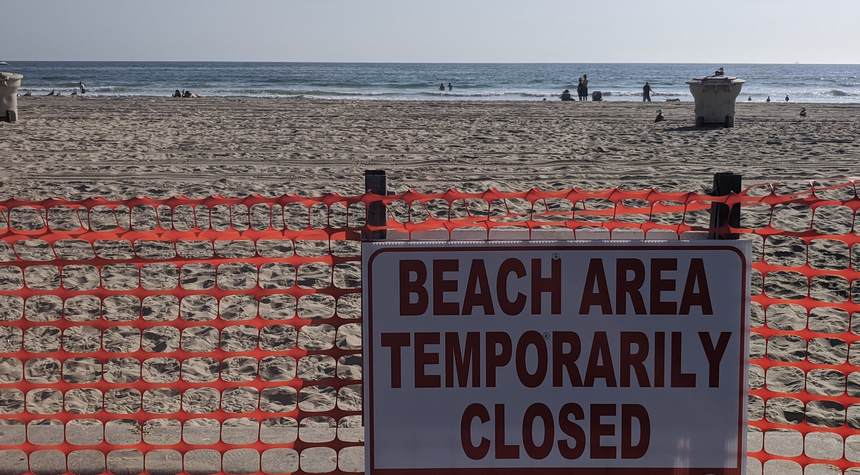Have Our Politicians Learned the Lessons From the First COVID Crackdown?

This fall, as people move indoors, the newest COVID-19 variant will work its way through the population. As it does, we should keep in mind the experience from the first COVID crisis in January 2020 and all the mistakes that policymakers made back then.
Some of those mistakes were out of an abundance of caution more than any nefarious schemes to control the population. That came later. What we came to realize is that healthy people had little to worry about. The old and the sick needed to protect themselves the best way they could.
Once this became obvious — toward the end of Summer 2020 — mandates, lockdowns, masking, and other restrictions should have ceased. Instead, politicians and bureaucrats maintained them. And it got worse when the vaccines became available. Soon after the vaccines were released, the notion of “protecting the vulnerable” went out the window. It was now a question of modifying and controlling human behavior.
Already, this newest strain of COVID is rattling those who believe it somehow makes them superior to take precautions. According to John Stossel, schools in Texas and Kentucky closed. “The safety and well-being of our students, staff, and community is a top priority,” said the school superintendent in Texas.
“Studies on tens of thousands of people found ‘no consistent relationship between in-person K-12 schooling and the spread of the coronavirus,'” Stossel wrote.
A Lancet study found Florida had the 12th-fewest excess COVID deaths in the country, even though Florida students went back to school without masks relatively soon.
At least Texas’ and Kentucky’s closures were isolated and brief. Long-term closures during the pandemic brought America’s lowest math and reading scores in decades. Florida’s kids suffered less learning loss than kids in other states.
Sweden, which never closed its schools, suffered no learning loss. Sweden’s education minister wrote that children were “at much lower risk of serious illness” and that “keeping children learning was vital.”
The case of Sweden deserves a second look. The Swedes were skewered for their “laissez-faire” policies, with experts pointing to the lack of lockdowns and school and business closures as the reason for Sweden’s high COVID death count.
But as we discovered when looking closely at COVID numbers, there are different ways to count the dead. And Sweden counted anyone who died and tested positive for COVID-19. That means someone who died of a heart attack, or a car accident, or a fall off a ladder was included in the COVID death count.
In a new paper for the Cato Institute, Johan Norberg takes a second look at the numbers and reaches a far different conclusion than the initial observations of Sweden’s death count.
“It seems likely that Sweden did much better than other countries in terms of the economy, education, mental health, and domestic abuse, and still came away from the pandemic with fewer excess deaths than in almost any other European country and less than half that of the United States.”
Instead, Norberg focuses on excess deaths—the difference between the number of overall deaths in the country and the expected number of deaths based on past mortality rates. Here, Sweden ended up having the fewest excess deaths of any European country, seeing only a 4.4 percent excess death rate.
That’s slightly better than Norway’s 5 percent and less than half of Europe’s average excess death rate of 11 percent.
Stossel makes the point that “Masks, lockdowns, and closing schools won’t stop COVID. We have to live with it.” I should point out that Donald Trump made that exact point in October 2020 and was skewered in the media for it.
No comments:
Post a Comment